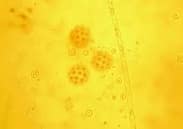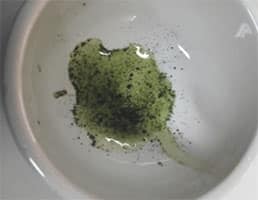 The term plankton , which comes from the Greek word plankton , refers to the group of tiny plant and animal organisms that float in fresh or salt water, being passively moved by the current. When the plankton is made up mainly of plants , it is called phytoplankton ; otherwise it is zooplankton .
The term plankton , which comes from the Greek word plankton , refers to the group of tiny plant and animal organisms that float in fresh or salt water, being passively moved by the current. When the plankton is made up mainly of plants , it is called phytoplankton ; otherwise it is zooplankton .
Phytoplankton, therefore, is made up of plant organisms that live in seas or bodies of fresh water. Like plants found on the Earth's surface, phytoplankton develop photosynthesis : that is, they can generate organic matter from inorganic matter using energy from the sun. In fact, in this process, phytoplankton absorbs a large amount of the carbon dioxide generated by humans and releases oxygen.
The organisms that make up phytoplankton are autotrophs since they do not feed on other living beings, but instead synthesize the substances they need from inorganic elements. Protist algae and cyanobacteria make up this group.
As expressed in the previous paragraphs, phytoplankton has great biological importance; however, it can also cause ecological disruption. If the temperature is favorable and a surplus of nutrients accumulates in the water, the bloom or flowering of phytoplankton is generated, which multiplies until the water turns greenish. As nutrients are depleted and the organisms that make up phytoplankton begin to die en masse, the water turns brown and becomes contaminated from the decomposition of these beings. This phenomenon causes the so-called red tide : the toxins from the algae affect clams, mussels and other mollusks which, if ingested by people, cause poisoning.
In recent years, phytoplankton has been incorporated into cooking , in the same way as many other ingredients that until a few decades ago would have seemed impossible to use for food preparation. Given the endless beneficial properties for our body, many call it the "breast milk of mother earth."
 This variant of marine plankton contains a quantity of nutrients that is very favorable for our health , and in scientific terms it is called ALPHA3 CMPES . It is important to note that it does not simply consist of any type of marine phytoplankton collected at random, but rather a selection of certain organisms that have been qualified as suitable for our consumption. More specifically, these are about two hundred species of microorganisms, which fish also use for food.
This variant of marine plankton contains a quantity of nutrients that is very favorable for our health , and in scientific terms it is called ALPHA3 CMPES . It is important to note that it does not simply consist of any type of marine phytoplankton collected at random, but rather a selection of certain organisms that have been qualified as suitable for our consumption. More specifically, these are about two hundred species of microorganisms, which fish also use for food.
One of its most characteristic features is that its cells have a silica coating: almost all other plants are covered in cellulose. Thanks to this detail, our body can absorb its nutrients more efficiently, investing less energy in the process. Phytoplankton has a large percentage of the nutrients that our body needs to function properly.
Among its considerable contribution in minerals, vitamins, proteins and carbohydrates, we can say that phytoplankton is a very complete food for us. Another of its strong points is the fact that it has a simple cellular composition, thanks to which the body does not have to work hard to recognize nutrients and assimilate them.
Including phytoplankton in our diet also helps us purify the body more effectively, thanks to the so-called diatoms , which serve as filters to clean the blood of toxins. In general, the volume of phytoplankton that is recommended for daily intake is very small, so that it acts as a complement to our nutrition. Although a human being could perfectly sustain itself on this food, for various reasons, both cultural and economic, it is not normal to use it as the only source of food.
